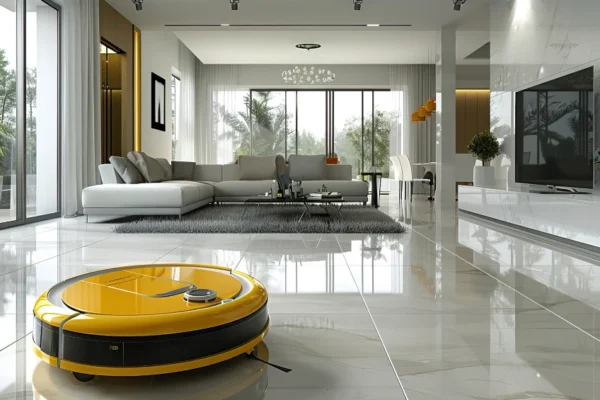When Did Phones Become Our Best Friends?
Let’s be honest. When’s the last time you went an hour without checking your phone?
Can’t remember? You’re not alone.
The average person checks their phone 96 times per day. That’s once every 10 minutes during waking hours. Some people check way more than that.
We wake up to notifications. We fall asleep scrolling. Our phones sit next to us during meals, meetings, and even bathroom breaks.
This isn’t normal. And it’s not healthy.
The Hidden Cost of Constant Connection
Being plugged in 24/7 feels normal now. But it’s doing serious damage to our brains and bodies.
Your Brain on Digital Overload
Constant notifications mess with your brain’s reward system. Every ping, buzz, and flash triggers a tiny hit of dopamine. It’s like a mini addiction.
Your brain starts craving these hits. You feel anxious when your phone isn’t nearby. Sound familiar?
This constant stimulation also hurts your ability to focus. Research shows that heavy smartphone users have shorter attention spans than goldfish. Literally.
Mental Health Takes a Hit
Social media was supposed to connect us. Instead, it’s making people feel more isolated than ever.
Studies link heavy social media use to:
- Increased anxiety and depression
- Poor self-esteem
- Fear of missing out (FOMO)
- Sleep problems
- Comparison and jealousy
Instagram and TikTok show highlight reels, not real life. But our brains forget that. We compare our messy reality to everyone else’s perfect posts.
Physical Problems Too
Digital overload doesn’t just hurt your mind. It damages your body:
- Tech neck from looking down at screens
- Eye strain from blue light exposure
- Sleep disruption from late-night scrolling
- Reduced physical activity from sitting too much
- Headaches from screen glare
Some people develop “text claw” from repetitive phone use. Their hands cramp up and hurt.
The Science Behind Digital Addiction
Tech companies hire neuroscientists and behavioral psychologists. Their job? Make apps more addictive.
They use the same techniques as casinos:
Variable Reward Schedules
You never know when you’ll get likes, comments, or messages. This unpredictability keeps you constantly checking.
Social Validation Loops
Likes and comments trigger your brain’s social reward centers. You post something and wait for approval. It’s addictive.
Fear of Missing Out (FOMO)
Apps show you what everyone else is doing. This creates anxiety that you’re missing something important.
Infinite Scroll
There’s no natural stopping point. You can scroll forever. Before you know it, hours have passed.
Signs You Need a Digital Detox
How do you know if your digital habits are unhealthy? Here are the warning signs:
Emotional Red Flags
- Feeling anxious when your phone battery dies
- Getting upset when you can’t find your phone
- Checking social media first thing in the morning
- Feeling jealous of others’ online lives
- Getting angry at negative comments or posts
Physical Warning Signs
- Neck and shoulder pain from phone use
- Eye strain and headaches
- Trouble falling asleep
- Waking up tired despite sleeping enough
- Carpal tunnel or hand pain
Social and Behavioral Changes
- Choosing phone time over face-to-face conversations
- Checking your phone during meals with others
- Feeling bored without constant stimulation
- Struggling to focus on one task
- Losing track of time while scrolling
The Phone Phantom Syndrome
Ever feel your phone vibrating when it’s not? That’s phantom vibration syndrome. Your brain is so used to notifications that it creates fake ones.
If this happens to you regularly, it’s a clear sign you need a break.
Benefits of Taking a Digital Break
What happens when you step away from screens? Amazing things.
Mental Health Improvements
People who do digital detoxes report:
- Less anxiety and stress
- Better mood and emotional stability
- Improved self-esteem
- Reduced comparison with others
- More present-moment awareness
Better Sleep Quality
Blue light from screens messes with your natural sleep cycle. It tricks your brain into thinking it’s daytime.
When you reduce screen time, especially before bed, you fall asleep faster. You sleep more deeply. You wake up more refreshed.
Stronger Relationships
Without the distraction of devices, you connect better with people around you. Conversations go deeper. You listen instead of half-paying attention.
Increased Productivity and Focus
Your attention span improves when you’re not constantly switching between tasks. You can focus on one thing for longer periods.
Many people find they’re more creative, too. Boredom sparks imagination. Constant stimulation kills it.
Rediscovering Real-World Pleasures
When you’re not staring at a screen, you notice more:
- The smell of coffee brewing
- Birds singing outside
- The feeling of sunlight on your skin
- The taste of food you’re paying attention to
Life becomes richer and more vivid.
Practical Digital Detox Strategies
Ready to reclaim your time and attention? Here are proven strategies that work:
Start Small: The 1% Rule
Don’t try to go cold turkey immediately. That usually fails. Instead, make tiny changes that add up over time.
Examples:
- Check your phone 1% less each day
- Put your phone away for 10 minutes during meals
- Turn off one notification per week
- Charge your phone outside your bedroom
Small changes stick better than dramatic ones.
Create Phone-Free Zones
Designate certain areas of your home as device-free:
The Bedroom
- Charge your phone in another room
- Use a regular alarm clock
- Keep books by your bedside instead
The Dining Room
- No phones during meals
- Focus on food and conversation
- Make mealtime sacred
The Bathroom
- Yes, this needs to be said
- Bring a magazine or just think
- Your brain needs quiet moments
Time-Based Boundaries
Set specific times when you won’t use devices:
Morning Routine
- Don’t check your phone for the first hour after waking
- Do something analog instead: shower, coffee, stretching
- Start your day with intention, not reaction
Evening Wind-Down
- No screens 1-2 hours before bed
- Try reading, journaling, or gentle stretching
- Create a relaxing bedtime ritual
Weekend Mornings
- Keep Saturday or Sunday mornings screen-free
- Sleep in, make breakfast, enjoy slow time
- Remember what weekends used to feel like
The Power of Airplane Mode
You don’t need to turn your phone completely off. Airplane mode gives you access to useful features without the distraction of notifications:
- Use your phone for music during workouts
- Take photos without getting sucked into social media
- Use apps for meditation or reading
- Access maps when you’re lost
Digital Sabbath
Pick one day per week to go mostly or completely offline. Many people choose Sunday, but any day works.
Plan analog activities:
- Cook a meal from scratch
- Take a long walk or hike
- Read physical books or magazines
- Do arts and crafts
- Play board games with family
Reducing Social Media Specifically
Social media is often the most addictive part of our digital lives. Here’s how to tame it:
Audit Your Feeds
Look at who you follow. Ask yourself:
- Does this account make me feel good or bad?
- Do I learn something valuable from these posts?
- Would I miss this if it disappeared?
Unfollow accounts that make you feel worse about yourself or your life.
Turn Off Most Notifications
You don’t need to know immediately when someone likes your photo. Turn off notifications for:
- Likes and reactions
- Comments (except direct replies)
- Stories and posts from others
- App-suggested content
Keep notifications only for direct messages from close friends and family.
Use Built-In Time Limits
Both iPhone and Android have screen time controls:
- Set daily limits for social apps
- Get warnings when you approach limits
- See weekly reports of your usage
- Use app timers to auto-close programs
Find Alternative Activities
Replace mindless scrolling with intentional activities:
- Read articles from quality news sources
- Listen to podcasts or audiobooks
- Practice a hobby or skill
- Exercise or go for a walk
- Call a friend instead of texting
Enhancing Real-World Interactions
Digital detox isn’t just about using less technology. It’s about reconnecting with the physical world and real people.
The Art of Deep Conversation
When was the last time you had a really meaningful conversation? Here’s how to create them:
Put devices away completely
- Not just face-down. Put them in another room
- This shows the other person you have ytheirfull attention
- You’ll be amazed at how much better you connect
Ask better questions
- Instead of “How was your day?” try “What was the best part of your day?”
- Ask follow-up questions that show you’re listening
- Share your own experiences and thoughts
Practice active listening
- Focus on what the other person is saying
- Don’t plan your response while they’re talking
- Reflect what you heard to show understanding
Rediscovering Solo Activities
Many people feel uncomfortable being alone without entertainment. This is a skill worth rebuilding:
Mindful Walking
- Leave your phone at home or on airplane mode
- Notice your surroundings: architecture, nature, people
- Pay attention to your breathing and footsteps
- Let your mind wander freely
Cooking Without Distractions
- Don’t watch videos or check messages while cooking
- Focus on the smells, textures, and sounds of food
- Experiment with new recipes or techniques
- Enjoy the meditative aspects of food preparation
Reading Physical Books
- The tactile experience is different from screens
- You’re less likely to get distracted
- Your eyes get a break from blue light
- You can write notes in the margins
Building Real-World Hobbies
Develop interests that don’t involve screens:
Creative Pursuits
- Drawing, painting, or crafting
- Playing musical instruments
- Writing in journals with actual pens
- Photography with film cameras
Physical Activities
- Gardening and plant care
- Sports and fitness activities
- Dancing or yoga classes
- Hiking and outdoor exploration
Learning and Growth
- Taking in-person classes
- Joining clubs or groups
- Volunteering in your community
- Learning practical skills like cooking or repairs
Managing Work-Related Digital Demands
Many people feel they can’t disconnect because of work. Here are strategies for healthy boundaries:
Separate Work and Personal Devices
If possible, use different devices for work and personal life:
- Keep work apps off your phone
- Turn off work devices after hours
- Use different notification sounds for work vs. personal
Set Communication Expectations
Be clear with colleagues about your availability:
- Specify your response time for non-urgent messages
- Use out-of-office replies even for short breaks
- Don’t respond to work messages during personal time
Create Transition Rituals
Help your brain switch from work mode to personal time:
- Change clothes when you get home
- Take a short walk after finishing work
- Do a brief meditation or breathing exercise
- Write down tomorrow’s priorities to clear your mind
Technology That Supports Digital Wellness
Ironically, some technology can help you use technology more mindfully:
Focus Apps and Website Blockers
Forest
- Plant virtual trees that die if you use your phone
- Gamifies the process of staying focused
- Partners with real tree-planting organizations
Freedom
- Blocks distracting websites and apps
- Works across all your devices
- Provides detailed usage reports
Moment
- Tracks your phone usage automatically
- Shows patterns in your behavior
- Provides coaching for reduction
Mindfulness and Meditation Apps
Headspace
- Guided meditations for beginners
- Programs specifically for reducing phone addiction
- Sleep stories and relaxation exercises
Calm
- Nature sounds and ambient noise
- Daily meditation sessions
- Breathing exercises for anxiety
Alternative Communication Methods
Marco Polo
- Video messaging that feels more personal than texting
- Encourages longer, more thoughtful messages
- Reduces the pressure for immediate responses
Voxer
- Walkie-talkie style voice messages
- More personal than text, less demanding than phone calls
- Good for staying connected without constant checking
Creating Your Personal Digital Detox Plan
Everyone’s relationship with technology is different. Create a plan that works for your specific situation:
Week 1: Assessment
- Track your current digital habits without judgment
- Use built-in screen time tools to get accurate data
- Notice how you feel before, during, and after device use
- Identify your biggest problem areas
Week 2: Small Changes
- Implement one or two minor changes
- Turn off non-essential notifications
- Create one phone-free zone in your home
- Try one new analog activity
Week 3: Bigger Adjustments
- Set specific times for checking messages and social media
- Implement morning or evening screen-free time
- Plan one completely offline activity per day
- Start having device-free meals
Week 4: Fine-Tuning
- Adjust strategies based on what’s working
- Address any challenges or resistance you’ve encountered
- Plan for long-term sustainability
- Celebrate your progress
Overcoming Common Challenges
Digital detox isn’t always easy. Here are solutions to common obstacles:
“But I Need My Phone for Work”
- Separate urgent from non-urgent communications
- Use scheduling features to limit when work messages come through
- Find analog alternatives for non-essential phone functions
- Set specific times for checking work messages
“I’ll Miss Important Things”
- Most “urgent” things aren’t urgent
- Important people will find other ways to reach you
- Missing some information won’t hurt you
- You’ll gain more than you lose
“My Friends/Family Won’t Understand”
- Explain your reasons and goals
- Invite others to join you
- Set expectations about response times
- Show them the benefits you’re experiencing
“I Feel Bored Without My Phone”
- Boredom is good for creativity and mental health
- Start with short periods of phone-free time
- Have alternative activities ready
- Remember that discomfort is temporary
Long-Term Digital Wellness
The goal isn’t to eliminate technology forever. It’s to develop a healthier relationship with it.
Regular Digital Detox Days
Make periodic breaks a regular habit:
- Monthly 24-hour detoxes
- Weekly shorter breaks
- Daily phone-free periods
- Seasonal longer detoxes
Mindful Technology Use
Before picking up your phone, ask yourself:
- What am I hoping to accomplish?
- How long do I plan to spend?
- Is this the best way to meet this need?
- How do I want to feel afterward?
Setting and Maintaining Boundaries
- Regularly review and adjust your digital boundaries
- Don’t be afraid to make changes as your life evolves
- Check in with yourself about how technology makes you feel
- Stay flexible but committed to your well-being
The Ripple Effects of Digital Wellness
When you improve your relationship with technology, other areas of life improve too:
Better Physical Health
- More sleep and better sleep quality
- Increased physical activity
- Better posture and less pain
- Improved eye health
Stronger Relationships
- Deeper conversations with loved ones
- More quality time with family and friends
- Better conflict resolution skills
- Increased empathy and emotional intelligence
Enhanced Career Performance
- Better focus and concentration
- Increased creativity and problem-solving
- Improved time management
- Less stress and burnout
Greater Life Satisfaction
- More presence and mindfulness
- Stronger connection to your values
- Increased gratitude and appreciation
- Better work-life balance
Conclusion: Your Journey Back to Real Life
Digital technology should serve you, not control you. But somewhere along the way, many of us lost control of our devices and our attention.
The good news? You can take it back.
Digital detox isn’t about becoming a technology hermit. It’s about using technology intentionally instead of compulsively. It’s about remembering what life feels like when you’re fully present.
The strategies in this article work. But they only work if you try them. Start small. Be patient with yourself. Progress isn’t always linear.
Your attention is your most valuable resource. It’s time to stop giving it away for free to apps designed to steal it.
The real world is waiting for you. Your loved ones are waiting for you. Your thoughts and creativity are waiting for you.
All you have to do is put down your phone and look up.
Take Action: Your 7-Day Digital Detox Challenge.
Ready to start reclaiming your time and attention? Try this simple 7-day challenge:
Day 1: Track your current phone usage without changing anything
Day 2: Turn off all non-essential notifications
Day 3: Create one phone-free zone in your home
Day 4: Don’t check your phone for the first hour after waking up
Day 5: Have one completely device-free meal
Day 6: Spend 30 minutes doing an analog activity you enjoy
Day 7: Reflect on the changes you’ve noticed and plan your next steps
Start today. Your future self will thank you for taking back control of your digital life.





